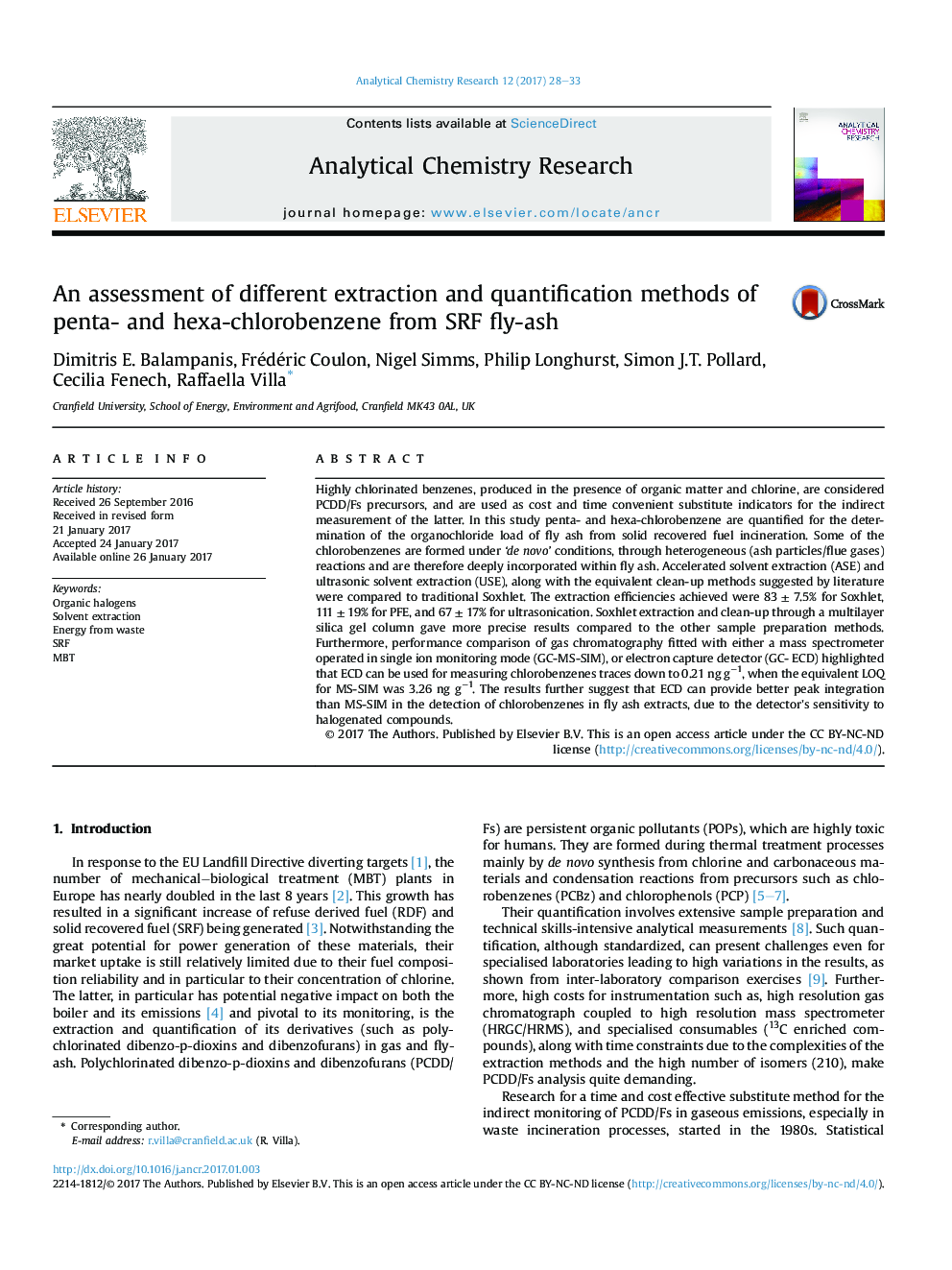| Article ID | Journal | Published Year | Pages | File Type |
|---|---|---|---|---|
| 5131825 | Analytical Chemistry Research | 2017 | 6 Pages |
â¢Soxhlet provided the most consistent extraction efficiency for SRF complex matrices, with the lowest RSD.â¢Detection limits of pentachlorobenzene and hexachlorobenzene are 15 and 10 times lower with ECD than MS-SIM respectively.â¢Increased sensitivity of ECD for halogenated compounds eliminates the need for extensive sample purification.â¢Different extraction and GC detection methods showed that Soxhlet and GC-ECD provided optimal results for SRF fly-ash.
Highly chlorinated benzenes, produced in the presence of organic matter and chlorine, are considered PCDD/Fs precursors, and are used as cost and time convenient substitute indicators for the indirect measurement of the latter. In this study penta- and hexa-chlorobenzene are quantified for the determination of the organochloride load of fly ash from solid recovered fuel incineration. Some of the chlorobenzenes are formed under 'de novo' conditions, through heterogeneous (ash particles/flue gases) reactions and are therefore deeply incorporated within fly ash. Accelerated solvent extraction (ASE) and ultrasonic solvent extraction (USE), along with the equivalent clean-up methods suggested by literature were compared to traditional Soxhlet. The extraction efficiencies achieved were 83 ± 7.5% for Soxhlet, 111 ± 19% for PFE, and 67 ± 17% for ultrasonication. Soxhlet extraction and clean-up through a multilayer silica gel column gave more precise results compared to the other sample preparation methods. Furthermore, performance comparison of gas chromatography fitted with either a mass spectrometer operated in single ion monitoring mode (GC-MS-SIM), or electron capture detector (GC- ECD) highlighted that ECD can be used for measuring chlorobenzenes traces down to 0.21 ng gâ1, when the equivalent LOQ for MS-SIM was 3.26 ng gâ1. The results further suggest that ECD can provide better peak integration than MS-SIM in the detection of chlorobenzenes in fly ash extracts, due to the detector's sensitivity to halogenated compounds.
Graphical abstractDownload high-res image (212KB)Download full-size image
